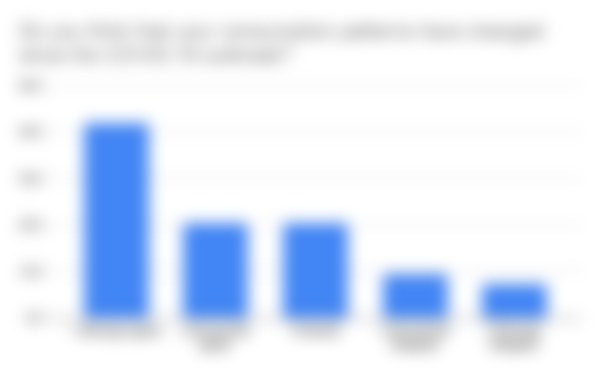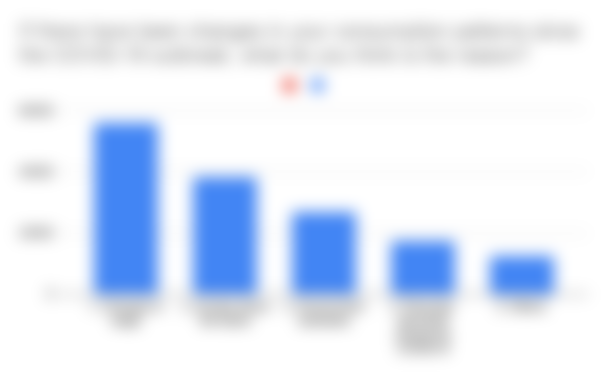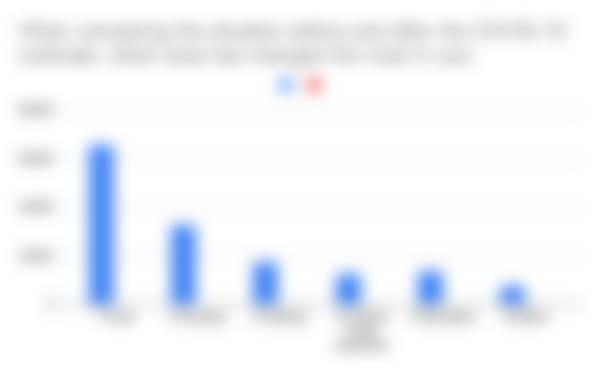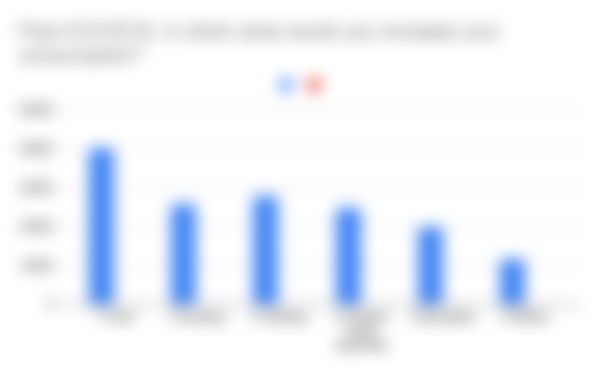The COVID-19 pandemic disrupted the healthy flow of trade. and caused. The shift in consumer patterns is evident, showing that the general household was adversely affected.
COVID-19 brought uncertainty that impacted people’s behavior worldwide. And as the world begins to move from pandemic crisis management to recovery, the economy is slowly reopening. Moreover, the lockdown has caused an internal change in mindset during the period of contagion, self-isolation, and economic uncertainty. All these factors influenced the way consumers behave.
There is a significant variance in consumer viewpoint across the globe, including individual consumption patterns. In line with this, Real Research has surveyed to better understand the changes in the consumption patterns after COVID-19. The survey started on January 04 and ended on January 08, 2021.
Highlights
Almost 42% have a monthly income of $2000.
About 45% of the respondents are full-time employees.
42% think that their consumption patterns have changed since the COVID-19 outbreak.
More than 37% believe that the changes in their consumption patterns since the COVID-19 outbreak are due to wage changes.
67% feel pressured about their consumption after the COVID-19 outbreak
Around 44% think that the most changed area in their consumption pattern is food when comparing before and after the COVID-19 outbreak.
27% of respondents believe they will increase their food consumption after COVID-19
The Real Research survey data collected from around 150,500 participants shows 83% of males and 17% of females. This indicates that males adapted to new consumer behaviors than females during the high-time of COVID-19.
Demographics-wise, the 19 to 29 age group (84,157) dominates the survey. They are then followed by the 29 to 39 year-olds (41,124) and the 39 to 49 age group (17,996). Meanwhile, considering the purchasing power, these survey results are gathered from people with less than $2000 monthly income and from the $2000 to $8000 monthly income bracket.
Based on the result, we can observe that males are more likely to deal with the changes in consumption patterns than females. Furthermore, respondents aged 19 to 29 years old are found to have incomes less than $2000 from their initial ventures, full-time or part-time jobs.
Post-COVID-19: Changes in Consumption Patterns
COVID-19 has affected all aspects of people’s lifestyle. Many were forced to curb expenses and tighten their belts as uncertainty lingers. Most importantly, it has changed the way people consume goods.

Given that the pandemic affected many people economically, 42% (63,182) admit that their consumption patterns have changed since the outbreak. About 20% (31,018) believe that COVID-19 somehow changed their way of consuming goods. Notably, 20.5% (30,826) are neutral, meaning they weren’t able to monitor or observe their consumption behavior.
On the other hand, 9.5% (14370) of respondents ‘somewhat disagree’. Only 7.4% (11,121) ‘strongly disagree’ with the question asking the participants about the changes.

In line with this, nearly 38% think that these changes are due to changes in wages. On the other hand, around 26% affirmed that they are anxious about the future. Aside from these, 17% of the participants said that the reasons are government subsidies and last.
Also, 11% believe in the revenge spending caused by COVID19. However, the rest of the 8% think there are other reasons aside from the ones stated above.
Nearly 65,766 (44%) of the people who took the survey said that food was the most changed area in their consumption patterns. It means that COVID-19 has affected many jobs. Furthermore, 32,635 (22%) of the participants think their housing consumption has changed.

Moreover, 12,729 (11%) affirmed their clothing consumption has changed. It can be that they don’t have stable jobs or their waves have changed. Around 12,729 (8%) confirmed that their cultural living expenses have changed. This also can be due to job instability or changes in tides.
Besides these, 13,896 (9%) claimed that COVID-19 had changed their education. As a matter of fact these can be students who are having part-time jobs or distance learning. However, the rest of 7797 (5%) don’t know.
The Majority Feels Consumption Pressure
A great number (100,265) of the participants feel pressured about their consumption patterns. The fret can be linked to the reality that many people have lost their jobs and experienced salary cuts. Meanwhile, the remaining respondents (50,252) said they don’t feel pressured, which means they have the situation under control.
Post-COVID19 Outlook: Increase in Food Consumption
More people want to spend more on food. With eating out or delivery can pose danger of contracting the coronavirus, many opts to cook their own food. When asked in which area would you increase your consumption after the COVID-19, almost 27% of the respondents said they would add it to their food budget. These are followed by 17% who affirmed that they would increase their housing consumption.

Furthermore, around 19% would increase their clothing consumption, and 16% said they would improve in cultural living expenses. On the other hand, 13% declared that their education comes first. Aside from these, 7% don’t know what they will increase after the pandemic.

In conclusion, the survey results show that most people changed their consumption habits due to the COVID-19 outbreak. As some continue to shift their spending to essentials while cutting back on most discretionary purchases, others act not affected by the situation.




